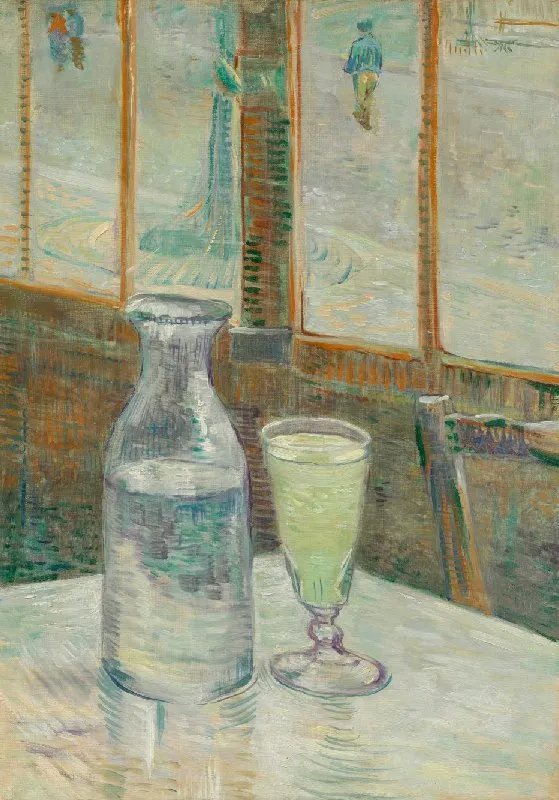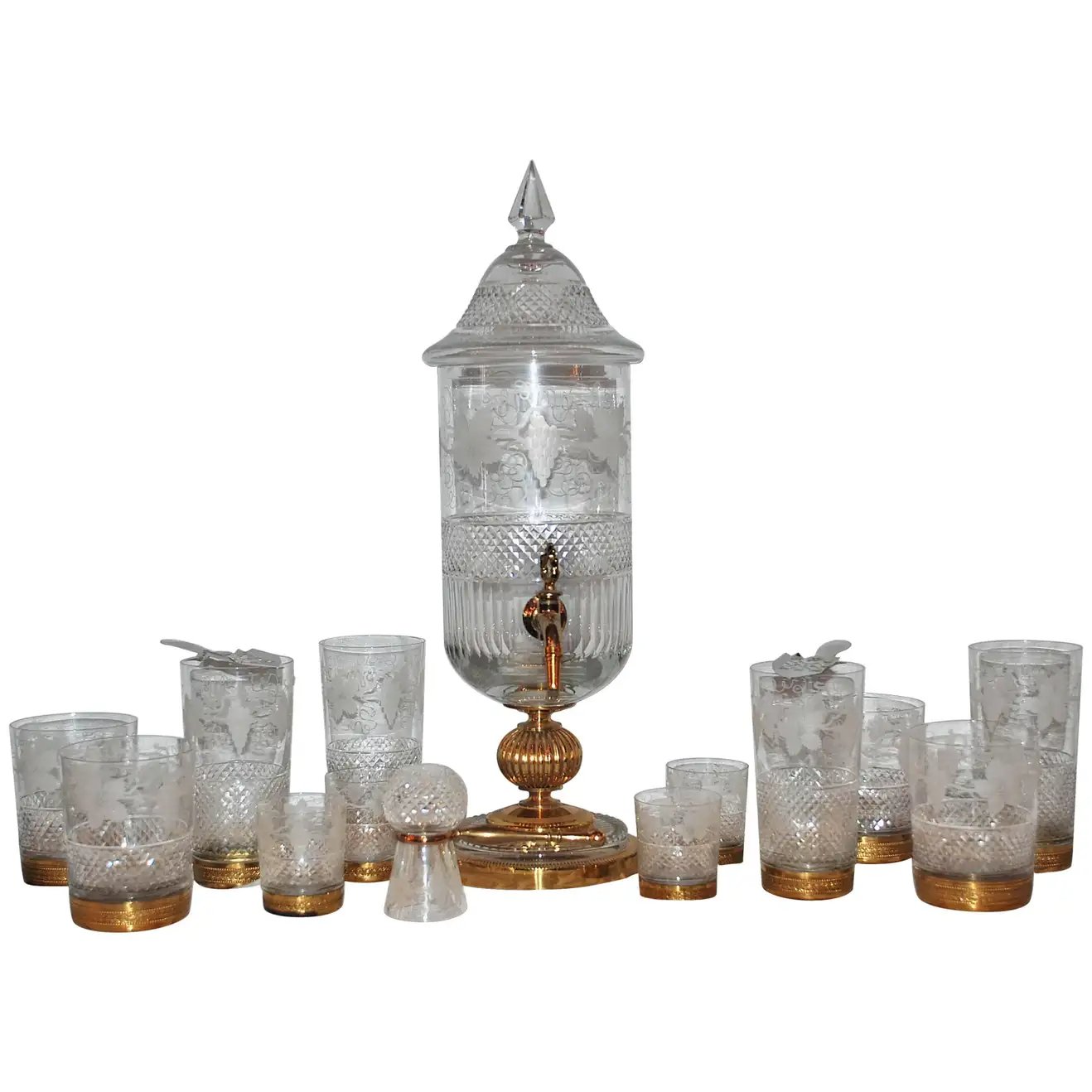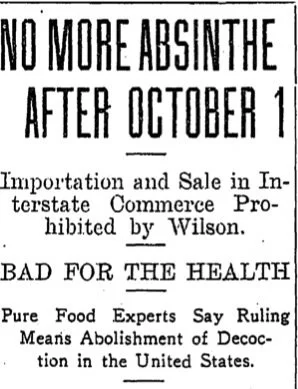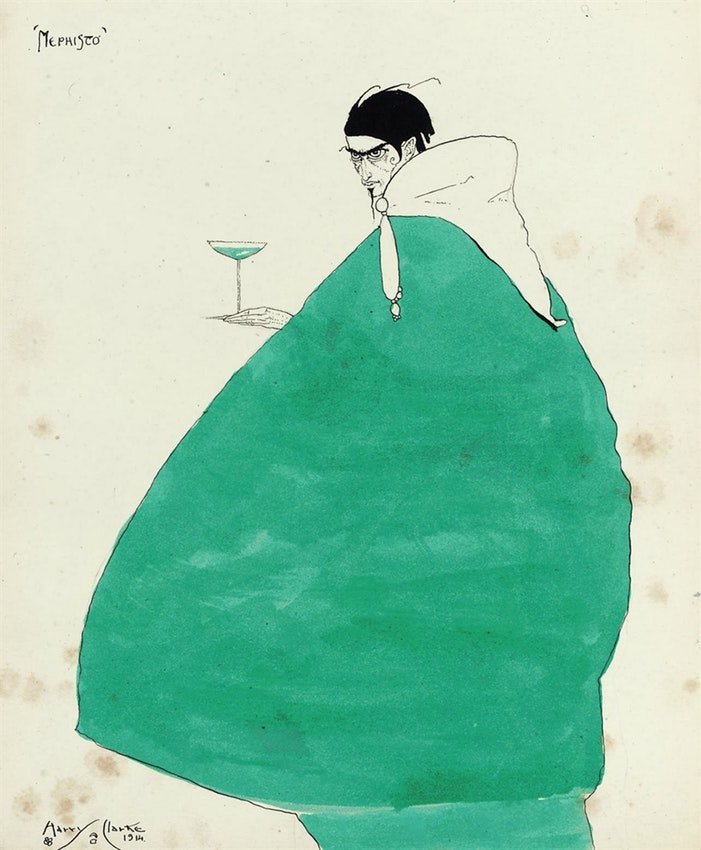JH Color Theory: Absinthe Minded

Wild Hop Entwining Wormwood and Cow-Parsnip. Gertrude Jekyll, c. 1886
Illustration of wormwood from La Flore et la Pomone Françaises by Jean Henri Jaume Saint-Hilaire
In the 1790s, French physician Pierre Ordinaire revived an ancient Greek-Roman remedy called absinthion, a formula made from wormwood leaves historically used to restore health and alleviate pain.
Absinthe would go on to become widely commercially available—a mixture of high-proof alcohol mixed with oil of wormwood, green anise, hyssop, lemon balm, and thujone, a chemical lending it a “milky” quality… and also believed to cause hallucinations.
“The Absinthe Drinker,” Viktor Oliva, 1901
Café Table with Absinthe, Vincent van Gogh, 1887
In the next century, absinthe’s reputation became one steeped in decadence and controversy. Known as the Green Fairy (la fée verte), its psychedelic properties became connected with the culture of Parisian artists and writers like Oscar Wilde, van Gogh, Toulouse-Latrec, and Manet, many naming works after the drink or depicting it in their art.
Legras Glass & Silver Opera Absinthe Bottle, 1895
Chiseled glass absinthe topette with green crystal cap, ca early 1900s
Carved crystal absinthe vessel, ca late 19th c
French crystal and gold bronze absinthe fountain and glasses, ca 1890
In Paris, “The Green Hour” became the nickname for 5-6pm—the hour when cafes would fill with Parisians looking to start their evening with a splash of absinthe (it also coincided with a French wine shortage in the 1880s, contributing to its ubiquity).
Not everyone was so enamored: according to studies from French psychiatrist Valentin Magnan, absinthe held unique properties leading to blind rage, erratic behavior, and madness (“Absinthe is the principal cause of bloody crimes in our country,” La Gazette de Lausanne reported in 1905). By 1915, the drink would be banned across Europe and North America.
In retrospect, absinthe’s controversy was mostly hearsay; an easy villain that could take the blame for societal fears around the ‘decline’ of French culture and rising crime. Studies have since not been able to prove any specifically sinister effects of consuming absinthe, or whether it actually causes any hallucinations at all.
“Mephisto,” a 1914 self-portrait by Harry Clarke depicting himself as Mephistopheles while holding a glass of absinthe - hinting at a “sense of personal connection to this story of temptation, evil, and damnation.”
And while we’re not recommending anyone consume an elixir made of 50% ethanol, its milky green hue remains intriguing — might we suggest an absinthe-minded palette a la JH:
















